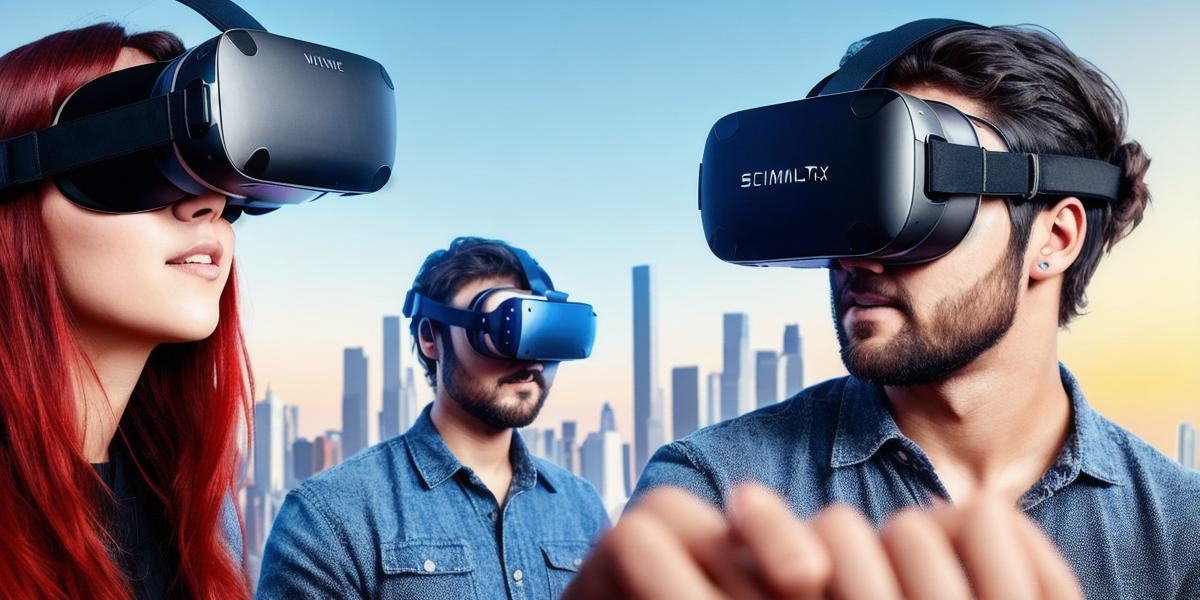In recent years, simulated reality and virtual reality have emerged as powerful tools for creating immersive experiences that are changing the way we interact with digital content. While both simulated reality (SR) and virtual reality (VR) offer similar capabilities, there are key differences between them. In this article, we’ll explore these differences in detail and examine their respective strengths and weaknesses.
Simulated Reality: A Primer
Simulated reality is a type of interactive experience that allows users to immerse themselves in a virtual environment created using computer-generated graphics and other technologies. SR typically involves the use of specialized hardware, such as motion capture systems or haptic feedback devices, to track a user’s movements and translate them into an interactive digital experience.
One of the key advantages of simulated reality is its ability to create highly realistic simulations that can be customized to meet specific needs or requirements. For example, SR can be used for training purposes, such as flight simulation or military exercises, where the user must interact with a virtual environment in order to gain proficiency in real-world scenarios.
Virtual Reality: A New Frontier
Virtual reality, on the other hand, is a type of interactive experience that creates a fully immersive 3D environment that users can explore and interact with using specialized headsets or wearable devices. VR technology has advanced rapidly in recent years, with companies like Oculus and HTC releasing high-end hardware that allows users to move around freely within a virtual world.
One of the key advantages of virtual reality is its ability to create highly engaging and interactive experiences that can be used for entertainment, education, and other purposes. VR has already been used in a variety of applications, including gaming, training, and simulation, where users need to interact with a digital environment in order to achieve specific goals.
A Comparison of Simulated Reality vs Virtual Reality
While both simulated reality and virtual reality offer highly immersive experiences, there are several key differences between them. These include:
Realism vs Immersiveness
Simulated reality typically offers a higher level of realism than virtual reality, due to its ability to create highly detailed and customized simulations that accurately reflect real-world environments or scenarios. However, virtual reality can offer a more immersive experience by allowing users to move around freely within a fully interactive 3D environment.
Hardware vs Software
Simulated reality typically requires specialized hardware, such as motion capture systems or haptic feedback devices, in order to track a user’s movements and translate them into an interactive digital experience. Virtual reality, on the other hand, can be experienced using a wide range of hardware options, from low-end smartphones to high-end gaming PCs.
Customization vs Standardization
Simulated reality offers a high degree of customization, allowing users to create highly specific simulations that meet their unique needs or requirements. Virtual reality, on the other hand, is more standardized, with most VR experiences designed to be universally accessible and compatible with a wide range of hardware devices.
Cost vs Accessibility
Virtual reality is generally more cost-effective than simulated reality, due to its wider availability and lower hardware requirements. However, simulated reality can offer a higher level of realism and customization, which can be valuable in certain applications where accuracy and precision are critical.
Case Studies: Simulated Reality vs Virtual Reality in Action
To help illustrate the differences between simulated reality and virtual reality, let’s look at a few examples of how these technologies have been used in real-world applications.
Simulated Reality: Flight Simulation
One example of simulated reality is flight simulation, where users can experience the sensation of flying
